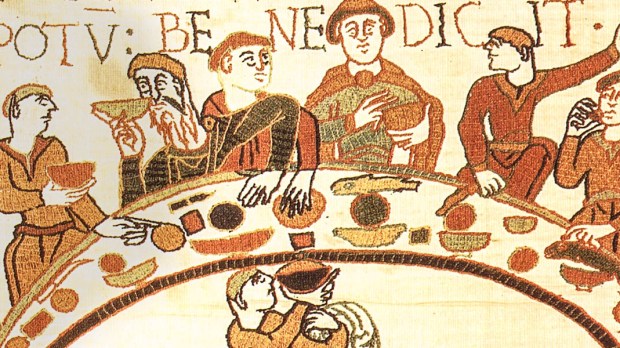Throughout history, the austerity of Lent (Quadragesima, in Latin, meaning “the forty days” or, even more accurately, “the fortieth day”) has varied. Some of the Fathers of the Church, as early as the 5th century (St. Leo and St. Jerome among them) affirm the 40-day fast was instituted by the Apostles themselves.
However, modern scholars beg to differ, as there is historical evidence pointing at the fact that the practice of fasting before Easter developed gradually, and that its duration was indeed variable. For instance, in his Church History, Eusebius quotes a letter St. Irenaeus sent Pope Victor in the 2nd century, regarding not only certain issues with the time in which Easter should be celebrated (or not) but also concerning its preliminary fast:
“Some think they ought to fast for one day, others for two days, and others even for several, while others reckon forty hours both of day and night to their fast.”
Also, interestingly, none of the pre-Nicene fathers prescribe a mandatory Lenten fast: no mentions of Lent are found either in the writings of St. Dionysus of Alexandria, nor in the Didascalia, for instance.
But, that aside, the term tessarakoste is found as being already in use in the 4th century. Evidently built as an analogy with the already existing “pentekoste” (Greek for “50 days,” from which “Pentecost” is derived), tessarakoste already indicated a period of not 50, but 40 days, following the examples of Moses, Elijah and Christ himself. It may also have been the case those who engaged in this practice were keeping in mind the 40 hours Jesus spent in the tomb.
Be that as it may, later medieval Lent would not last 40 days but 46, as it would include 40 days plus six Sundays. Both Ash Wednesday and Good Friday, according to some sources, were days of “Black Fast,” meaning no food at all was allowed (except in the case of the elderly and the ill, of course). During all these 40 days no meat whatsoever was permitted (not even on Sundays). Most lacticinia (dairy) and eggs were also forbidden.
In sum, most Europeans in the Middle Ages would go through Lent subsisting on bread, vegetables, salt, beer and wine (which were not prohibited, as they were then healthier than water), and some would refrain from having any meal until the hour of none (that is, 3:00pm). Later, the hour of none was moved to midday (hence, the English noon), and one could only break fast after Vespers, the evening prayer service.
Although some mitigation was gradually introduced in the Lenten fast (small portions of food and liquid – the famous collationes –– could be taken between meals in order not to lose strength for manual labor, for instance), giving up chocolate doesn’t even begin to compare with it.

